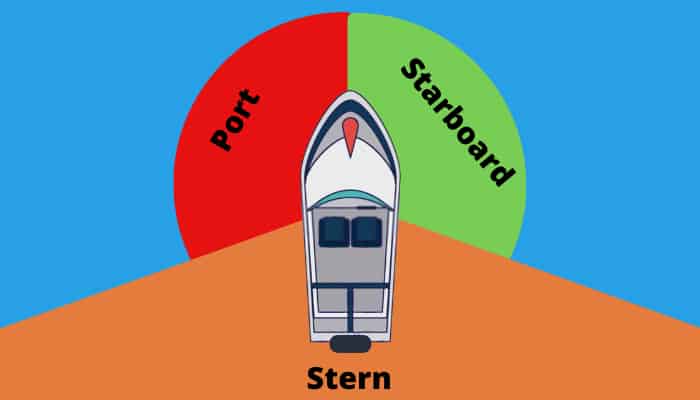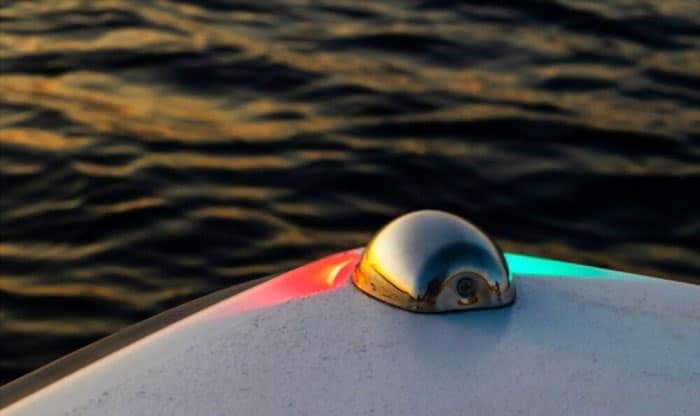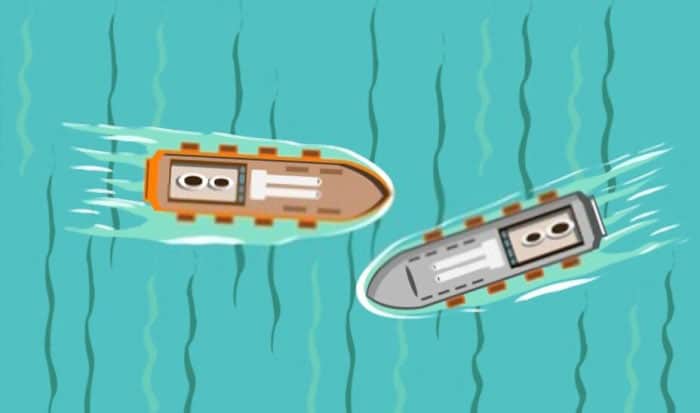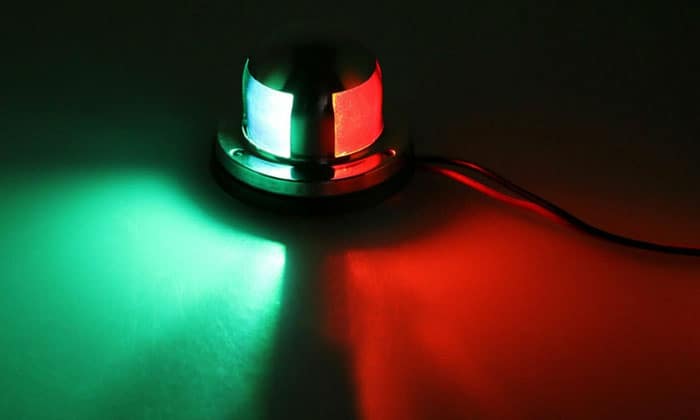Any boater should know the answer to the question, “What side is the green light on a boat?” as it pertains to basic nautical navigation and seamanship. Without further ado, the answer is it’s always located on the right or starboard side of the vessel.
This guideline is followed in almost all the countries of the world, not only the US. After all, it is prescribed by the International Rules for Preventing Collision at Sea or COLREGS, in short.
Continue reading why this rule was set in the first place and learn the overall importance of lights on ship
Table of Contents
What Side of the Boat is the Green Light?
The red and green lights on a boat are called sidelights and not only readily inform other vessels that you’re within the vicinity but help them safely navigate as well.
- The greenlight will be on the right side or starboard side of your boat, meanwhile the redlight is installed on the left or the port side of the vessel.
With the help of these readily visible boat lights, other watercraft will be able to make the necessary adjustments in direction and speed in order to avoid collisions.
What about the single white light on a boat? Well, that’s not really mounted on the sides, but rather on the back or stern of the vessel or at the mast.
As such, a white light on a boat can either be a stern light or masthead light.
- A sternlight, as the name readily implies, is mounted in the back of the boat and shows a beam of 135 degrees. Just like sidelights, a sternlight improves your visibility to other boats and, therefore, plays an equally vital role in preventing collisions with other vessels approaching from behind.
- A masthead light is typically mounted on a high point in the vessel and shines its light forward and sideways. It also aids in boosting visibility and giving a reference of your position to other vessels so they can adjust accordingly.
Why Red and Green Lights Are Important on a Boat
Now, you may be wondering why you need to use red and green as port and starboard lights, respectively. Why not, let’s say, orange or purple?
Well, studies have proven that these colors, especially the color red, are the easiest for the human eye to pinpoint from a distance, even in foggy and low-light conditions. This is precisely why we use the same combination of colors in traffic lights.
That being said, does that mean that green light go on a boat as well? Well, here comes the important part.
Sidelights are but one of a few other types of navigation lights go on a boat. As such, they give boaters a good idea as to who has the right of way, especially if two vessels are approaching each other.
- For example, if you’re approaching a vessel head-on, should you pass it on its red (port) side or green (starboard) side? COLREGS makes it clear that vessels should pass each other on the former port side, so it’s definitely not on the green side!
- It’s a different story if another watercraft is approaching from the side of another boat, though, and may well be where conventional traffic light rules overlap in a way (albeit very vaguely, I need to stress).
After all, boats approaching another vessel from the latter’s port (red) side are required to give way. The one that has the right of way will be the boat approaching from the other vessel’s starboard (right) side.
At any rate, that still doesn’t technically mean that a green light means “go” and a red light means “stop”. They’re just there to serve as a reference to maintain optimal navigation and safety for all vessels nearby.
If you remember how color lights go on a boat, you’ll only make maritime navigation less complicated than it is. Here are a couple of navigation lights for boats rules you should note:
- Sidelights should be uninterrupted (i.e. not blinking) and should show a beam with a horizontal arc of exactly 112.5 degrees. They should be mounted as close to the bow area as possible to heighten their visibility to other boats.
- These lights on ships or boats are either mounted individually or together depending on the boat’s length. The latter is usually recommended for boats that are less than 20 meters long, and usually, the lights are positioned in the centerline.
Tips for Boating at Night
- Follow the general rule that you should have running lights on a boat, in low to zero visibility conditions. These include most instances of night-time sailing, foggy weather, etc.
For example, in Australia, it’s often construed that boats, especially smaller vessels, showing an all-around white light are often anchored and not necessarily fishing or being towed.
- While you’re at it, continue to make the effort to learn more about boat light requirements that you should follow both locally and internationally.
- Make it a point to keep your speed minimal come night-time or in areas with limited visibility in general. You’ll only give yourself more time to react to avoid an accident.
- If you’re underway and not anchored, don’t turn on other lights other than the ones necessary for navigation and safety. These unnecessary lights might dampen visibility, after all.
- Since your eyes aren’t as reliable at night, try to use your ears more! Pick up on the usual sounds made by other boats, in particular, like the noise of its engine.
Also, did you know that experienced sailors are able to tell the position of another boat once they pinpoint the direction the waves are coming from? I suggest you try that out yourself and keep practicing.
Conclusion
So, again and to be clear, the starboard or port is the correct answer to the popular query, “What side is the green light on a boat?” It’s as essential as any navigational light in other vehicles as it actively prevents a major cause of accidents and disasters while out boating.
By knowing about these lights and the peculiar white light seen from behind the boat, you’ve not only expanded your knowledge but boosted your seamanship in the process.

“My intention from the first day establishing Boating Basics Online is to provide as much help as possible for boaters who want to experience a first safe and convenient trip. So feel free to join us and share your beautiful journeys to the sea!”




